|
The Invasive Species Bulletin provides you with all the latest news on invasive species in Montana and the region. Please let us know if you have any suggestions, contributions, questions, corrections, or comments. Email: scriswell@mt.gov

Keep the adventure, leave the invasive species!
To help stop the spread of invasive species, PlayCleanGo provides easy, actionable information to help individuals enjoy our beautiful natural resources responsibly.
 |
|
Meet Steward
Steward is a member of the elusive Bigfoot family and our latest PlayCleanGo ambassador. At 7'10", he's a big cheerful presence around here! Learn more about his story and how he can help you recreate responsibly.
|
| |
|
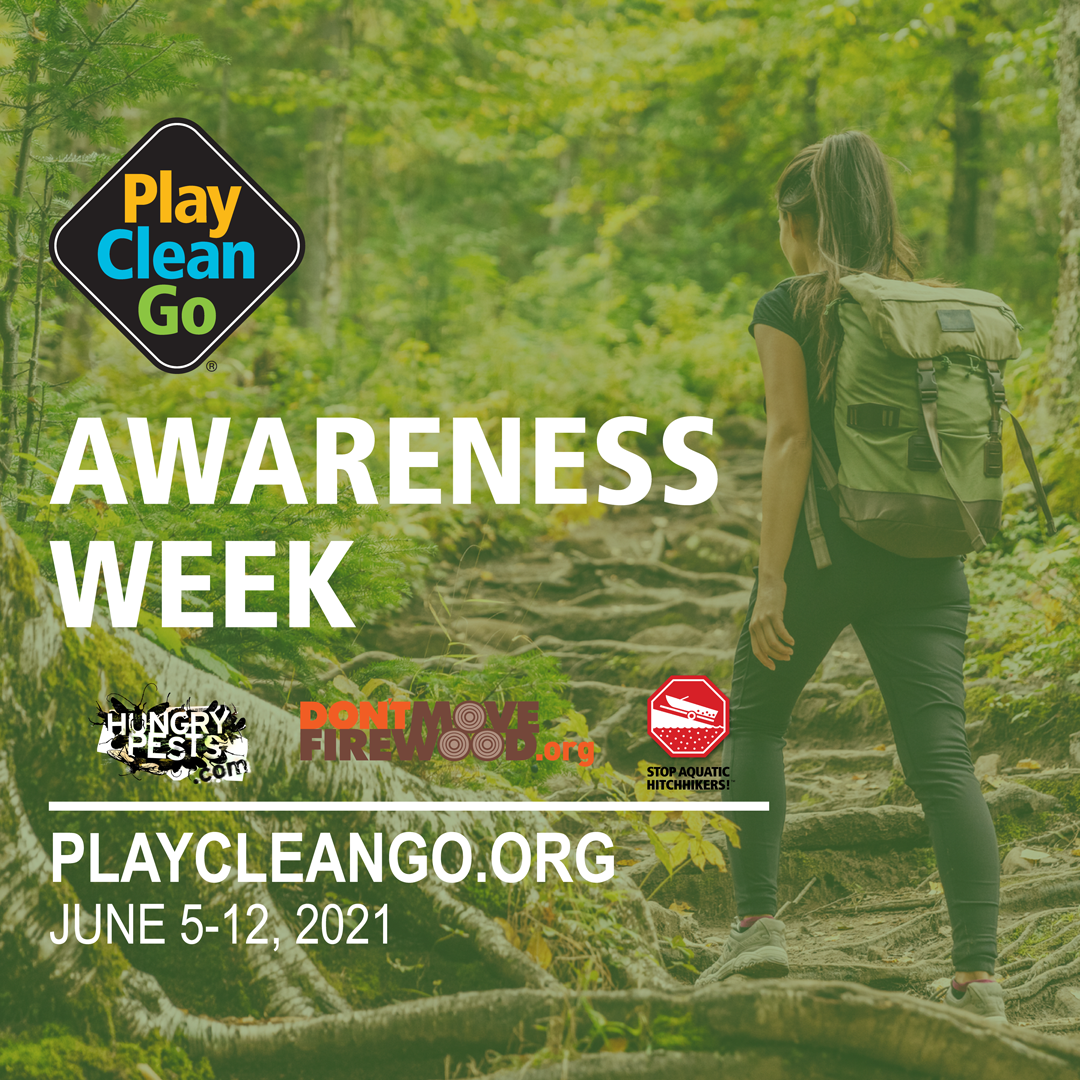
Montana celebrated first Noxious Weed Awareness Week, June 7-13, 2021, with weed pull events across the state.
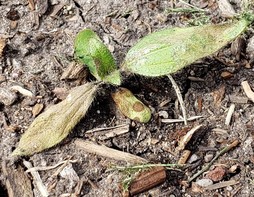 |
|
MSU Extension Service WEED POST
Does Vinegar Kill Weeds
Sunflower seedling one day after treatment with household vinegar (5% acetic acid). Photo by Jane Mangold.
|
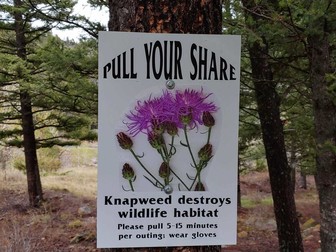
Pull Your Share
Pull Your Share is a movement started by Great Falls High teacher Dan Wilkins. Wilkins has been a weed fighter for years. He decided to use his knowledge and love of weed pulling to encourage others to do the same.
The objective is simple: Pull your share for five to 15 minutes per outing. "If everyone pulls for five to 15 minutes per outing, we can have an effect on trailheads, boat launches and campsites,"
Dan leads an annual field trip where teachers and students from the local high schools go out and pull noxious weeds hoping to encourage all recreationists to "pull their share."
Watch KRTVs May 27 "Pull Your Share" news story .
|
Montana Conservation Corp members sharing invasive species information this summer
June 25-27, Fort Benton, Summer Celebration, Colin (CEMIST) & Jennifer (FWP)
July 17, Fort Benton, Boats, Brews & Blues / Friends of Mo Breaks Canoe-Kayak Race, Jennifer (FWP)
July 30-Aug 7, Great Falls, State Fair, Colin (CEMIST) & Jennifer (FWP)
Aug 15-18, Big Sky, PNWER Conference, Jennifer (FWP)
Aug 18-22, Kalispell, NW MT Fair & Rodeo, Jillian (MACD and FBC)
Aug 28, Craig, Caddis Festival, Colin (CEMIST)
Sept 11, Lewistown, Chokecherry Festival, Jennifer (FWP) & Colin (CEMIST)
Sept 27-30, Missoula, NAISMA, CEMIST, UC3, & FWP
More News
[Wyoming] Wastewater treatments plants test for COVID and zebra mussels (5/15/21) [wyomingnews.com]
Wastewater treatment plants across Wyoming have been battling COVID-19 with testing. Now they can add the battle against invasive zebra mussels. Several wastewater treatment plants have been asked if testing for zebra mussels from their COVID-19 lab tests could be done, according to a press release.
Since the beginning of the pandemic a year ago, test results from wastewater treatment plants have been helpful in testing for the prevalence of COVID-19 from human waste. The daily tests are then sent to the state of Wyoming.
The Wyoming Game and Fish Department has been battling the zebra mussel issue for several years with boat inspections at border entry sites. The zebra mussel can do great damage to rivers, streams, and reservoirs, and can even plug up discharge pipes from wastewater treatment plants, according to the release.
Wyoming has targeted seven different wastewater treatment plants to test for zebra mussels, including the plants in Green River and Rock Springs. The other five plants are in Casper, Cheyenne, Gillette, Laramie, and Sheridan.
Montana Fish Wildlife and Parks Wants Help From Public In Reporting Snapping Turtle Sightings West Of Divide (5/20/21) [cbbulletin.com]
New Firewood Kiln Certification, Treatments, and Labeling Factsheet
USDA APHIS has published a useful factsheet aimed at addressing questions about kiln certification, treatments, and labeling in the new regulatory environment created by the federal domestic deregulation of emerald ash borer. The factsheet, named "Questions and Answers: Kiln Certifications, Treatments, and Labeling for Firewood" joins several other new EAB program publications available.
21 Mussel Boats Intercepted This Season (5/21/21)
Montana’s aquatic invasive species program is preparing for a busy season.
Watercraft inspectors have intercepted 21 mussel-fouled boats so far; the latest boat was stopped at the Broadus watercraft inspection station on Wednesday, May 19. Inspectors found dry and dead mussels on a commercially hauled outboard motorboat from Ohio that was destined for Washington state.
On May 18, an outboard motorboat from Lake Michigan was intercepted at the Wibaux inspection station. The boat owner had recently purchased the used boat and intended to launch in Washington state the next day.
Inspectors conducted a hot water decontamination on each boat before releasing them and notifying officials in Idaho and Washington.
What’s in a name? Non-native species not the same as invasives (5/17/21) [mcdonoughvoice.com]
“Invasive species” is an environmental buzzword right now and for good reason. The estimated price tag of managing the damages caused by invasive species such as the emerald ash borer or Asian carp is $120 billion annually in the U.S.
“Non-native invasive species are one of the biggest environmental threats, second only to habitat loss,” says Kelly Allsup, a University of Illinois Extension horticulture educator. “Once invasive species have a foothold it can be hard to remove them, so prevention and early detection and response is key.”
Video platforms normalize exotic pets
Researchers at the University of Adelaide are concerned video sharing platforms such as YouTube could be contributing to the normalisation of exotic pets and encouraging the exotic pet trade.
Tracking the Elusive Asian Giant Hornet
After weeks of searching, Washington State Department of Agriculture (WSDA) entomologists–—with some cutting-edge methods from USDA’s Plant Protection and Quarantine (PPQ)–—have located and eradicated the first Asian giant hornet (AGH) nest ever found in the United States. For months, WSDA had been trying to find the nest they knew must exist near Blaine, WA, because of AGH detections in the area. But finding the nest proved extremely challenging since the hornets build nests in forested areas, typically in an underground cavity. Read more.
Fighting feral future with kids at the helm
In a first of its kind, eleven schools from across Australia and New Zealand joined the 18th Australasian Vertebrate Pest Conference (AVPC), to add their ideas to the vision of achieving a feral free future.
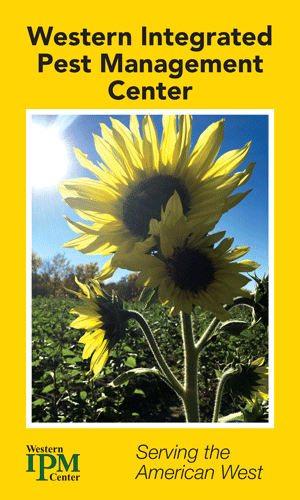 |
|
If you want to know all about the Western IPM Center – or introduce an administrator, client or colleague, the Introduction to the Western IPM Center is a great place to start.
The 12-page booklet highlights what the Western IPM Center does and the value added to IPM programs around the West. It is free for the asking.
Download it now [click.icptrack.com]
Request a hard copy
|
CALL FOR ABSTRACTS — 22nd International Conference on Aquatic Invasive Species
April 18-22, 2022 [Hybrid conference with in-person and live virtual components]
Thermae Palace Hotel, Oostende, Belgium
Abstract submission deadline September 30, 2021. The theme of ICAIS 2022 is to demonstrate the interconnectedness of global invasive species issues and inspire international collaboration on research projects at a global scale.
Events
June 5-12, PlayCleanGo Awareness Week
June 9, Helena Weed Pull and Trailhead Clean Up
June 12, Gallatin River Weed Pull
Aug. 11-12, EUCI Zebra & Quagga Mussel Mitigation Course, virtual
Aug. 15-19, Pacific NorthWest Economic Region Summit, Big Sky
Sept. 20-24, WRP Annual Meeting, Salt Lake City
Sept. 27-30, North American Invasive Species Management Association Conference co-hosted with MISC, Missoula
Oct. 6-7, Invasive Species Council of BC 2021 Invasive Species Research Conference, virtual
Oct. 31-Nov. 3, Entomological Society of America, hybrid, Denver, Colorado
Nov. 29-Dec. 2, Innovations in Invasive Species Management Conference and Training, Nashville
April 18-22, 2022, 22nd International Conference on Aquatic Invasive Species, Thermae Palace Hotel, Oostende Belgium
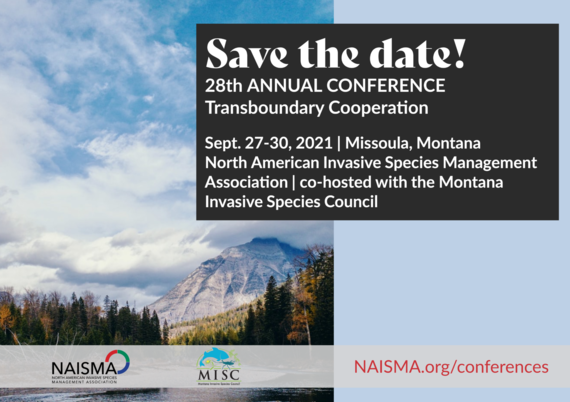
Webinars
June 16, 1:00 P.M. CT, Tree Health Monitoring for Invasive Pests
U.S. EPA IPM webinars - Usually 90-minute programs focused on different IPM topics.
Webinar Recordings
Western Governors Association Invasive Species Data Mobilization Campaign
The IMP Hour monthly online seminars
USACE: Invasive Watermilfoil Management - Nov. 12
Columbia Basin CWMA - Nov. 12
USACE: Flowering Rush - Nov. 4
Purchase access to the 2020 NAISMA Virtual Conference. $75
Publications
Lo Parrino, E., Falaschi, M., Manenti, R., & Ficetola, G. F. (2021). Lockdown policy effects on invasive species: a perspective. Biodiversity, 1-6.
Abstract: Changes in human activities caused by the COVID-19 pandemic can have multiple effects on biodiversity but there is limited knowledge of how this can impact invasive alien species (IAS). Societal measures against the spread of COVID-19 can have both short-term and long-term consequences on IAS. In the short-term, reduced human disturbance on natural habitats can increase the activity of IAS and accelerate their spread. Furthermore, management agencies have reduced control activities, sometimes allowing IAS to thrive, and ongoing monitoring programs have been interrupted, hindering rapid identification and management of biological invasions. Long-term impacts could include global modifications to wildlife trade and increased releases of captive-bred species because of the fear of zoonotic diseases and also greater public awareness of the risks of pathogens being spread among animal populations. Long-term collection and sharing of data are crucial to modulate IAS management during and after the lockdowns.
Funding Opportunities
U.S. Fish and Wildlife Service 2021 Implementation of the Quagga and Zebra Mussel Action Plan (QZAP) in the Western United States.
This opportunity will be open for application through June 15, 2021
Please feel free to reach out to barak_shemai@fws.gov.
Water Resources Research Act Program Aquatic Invasive Species Competitive Grants FY2021 Program Announcement Notice of Funding Opportunity - Fiscal Year 2021 Funding Opportunity Number (FON) G21AS00520 [water.usgs.gov]
Closing Date: 06/24/2021
Section 104(g) of the Water Resources Research Act of 1984 requires that this competitive grant program focus on: “water problems and issues of a regional or interstate nature beyond those of concern only to a single State and which relate to specific program priorities identified jointly by the Secretary (of the Interior) and the (water resources research) institutes.” Objectives of this program announcement also include the following:
- Promote aquatic invasive species research as related to hydrodynamics, water quality, and/or social science in the Upper Mississippi River basin to address a critical need for this state multi- state research.
- Promote the dissemination and application of the results of the research funded under this program.
- Assist in the training of scientists in relevant water resource fields. Proposals that include a strong educational component (student support) are encouraged, as are proposals from faculty beginning their careers.
Pesticide Environmental Stewardship Program Grants [click.icptrack.com]
Funding: $1 million
Details: The purpose of the Pesticide Environmental Stewardship Program Grant Initiative is to encourage smart, sensible and sustainable pest control in agriculture. The initiative, which is an extension of the Pesticide Environmental Stewardship Program, will enable grantees to implement sustainable pest management practices that align with the Agency’s strategic goal of providing a cleaner and healthier environment for all Americans and contribute to reductions in greenhouse gas emissions. Proposed projects should address implementation of environmentally sound pest management practices, approaches, training, and innovations that reduce the risks associated with pesticide use in agricultural settings and, where feasible, lead to corresponding reductions in greenhouse gas emissions that contribute to climate change. These projects will reduce unnecessary exposures to pests and pesticides through the adoption of integrated pest management practices and strengthen our shared goals of sustainable pest management and its intersection with climate change.
Deadline: July 9
APHIS Announces Availability of Funding to Control and Prevent Chronic Wasting Disease
Applications are due in June; specific deadlines vary. Funding decisions will be announced prior to October 1, 2021.
2020-21 Planning Documents and Pest Management Strategic Plan Request for Applications
Funding: Up to $15,000 per award
Details: These grants can be used to produce Pest Management Strategic Plans, Crop Profiles or other IPM-related plans. $75,000 is available in the 2021 cycle.
Applications considered on a rolling basis until funds are exhausted.
Job Opportunities
MT FWP Watercraft Inspectors, various locations. Visit State of Montana Careers and keyword search "watercraft inspector."
|